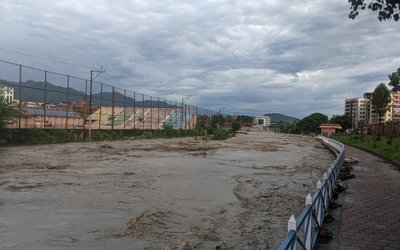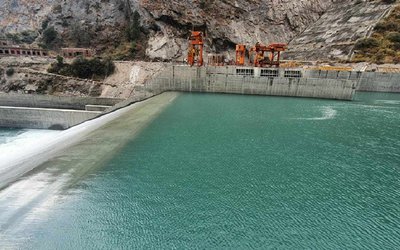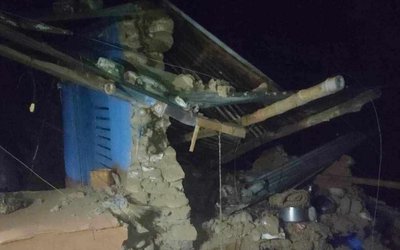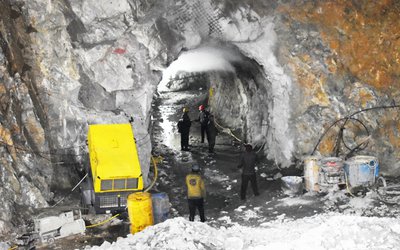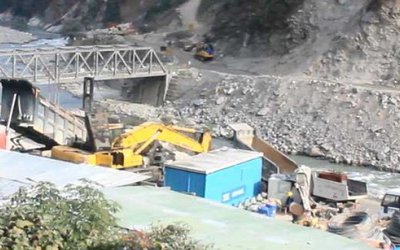
With torrential rain, Kulekhani Reservoir, which is generally filled to capacity at the end of September, started to overflow. There was an emergency-like situation at Nepal Electricity Authority board, Makwanpur district and the close-by areas as to how to resolve the crisis.
Alarmed by the rain and storage, District Administration Office of Makwanpur even issued an alarm to people living across Kulekhani and Bagmati rivers to take precautionary measures against risks likely to arise from dam's gate of Kulekhani.
With so much of water already poured at Bagmati and large areas of land in Nepal and India were under inundations, opening the reservoir would have catastrophic consequences for the region.
As the Chief District Officer issued the public notice at 10 AM and all the political leaders and administrators were in a hurry, Nepal Electricity Authority (NEA)'s MD Ghising, with hours of consultations with his colleagues, came with a solution to operate two hydropower projects and release the water.
Despite adamant politicians and CDO of Makwanpur, MD Ghising took a decision and started the operation of Kulekhani I and II releasing the water from its channel. As rain also receded, Ghising’s decision not only prevented catastrophic events downstream, but also generated revenue for Nepal exporting electricity to India in a big volume.
Usually, Kulekhani reservoir is normally filled by October. This year the reservoir is close to its capacity even at mid of July due to heavy rain. Last year, the level of water in Kulekhani reached 1526 meter by October but it has already reached 1526 meter now. The pond reservoir has capacity to store the water up to 1531 meter. The water level rose by up to 20 meters in four days.
Managing director of NEA Kul Man Ghising said that even if they operated both power houses, that will reduce just 2 centimeters in a hour. "We have already cut the import of electricity from India following the availability of electricity on our own and started to import as well.
With intense rain and damage of industrial area, the demand of electricity has gone down to 600 MW. Now Nepal is importing just 150 MW power from Dhalkebar Mujaffarpur.
"We are running the power house in full capacity to reduce the water. If the water cannot be reduced, it will flow through the spill way. If all these efforts fail, we have to open the gate of Kulekhani Reservoir," said MD Ghising.
With devastation of flood, NEA was in an emergency situation to restore the electricity supply in Terai districts where most of the industries lie. With his team support, NEA managed to make gradual restoration.
Upper Tamakosi Rush
With so many internal problems created by flood and rain, his another mission was to rush to Upper Tamakosi to hold regular progress meeting. With no alternatives, MD Ghising rushed to Upper Tamakosi, using the Lamosangu Charikot Road, which is still in dire conditions. He reached the Ghonger, Upper Tamakosi Project site, spending almost 8 hours.
With the contractor of Lot 2 not working at desired level, MD Ghising could not avoid the progress meeting.
The contractors have already installed 27.5 meter penstock pipe in vertical shaft in last one month, with 20 meter penstock pipe in lower vertical shaft and 7.5 meter in upper vertical shaft.
The progress of installing the upper vertical shaft is too slow. The installation of penstock pipe in lower Vertical shaft started in June 16 and the installation started in Upper vertical shaft in June 24.
With the length of 372 meter, the length of upper shaft penstock shave is 310 meter. Now 70 penstock pipes, with 5-meter length, and 27 tons each need to be installed. Although the work is one of the most difficult and complicated parts of the project, there is no option for them as well.
After the delayed by Indian contractor of Lot 2, Texmaco Rail & Engineering Limited, in stalling penstock pipe in vertical shaft, the installation of lower vertical shaft is given to lot 3 contractor Andritz Hydro of Austria with no additional financial burden to Upper Tamakosi Company. However, Texmaco Rail & Engineering Limited has been installing penstock pipe in Upper Shaft.

According to a report, it took 365 hours to install first penstock pipe in lower vertical shaft. For the installation of fourth pipe, the timing was 128 hours. MD Ghising also directed the contractors to speed up the work further reducing the timing.
After a daylong consolation and inspection, Managing Director of Nepal Electricity Authority and chairperson of Upper Tamakosi Hydropower Company Ltd Kul Man Ghising has directed project management. contractors and consultant to complete the 456 MW Upper Tamakoshi Project as par the latest work schedule.
Addressing different stakeholders at the project site, he said that the contractor has to complete the first unit by March 2020 generating 76 MW of electricity and remaining other five units need to be completed within June 2020.
"Our main concern is the date line set up for work completion routine. Be serious. Let us complete the work together and it will make all of us happy," said Ghising. "If we are unable to complete the work, it will create tensions for all of us. He directed companies to increase the number of workers and work in three shifts.
As they have already installed 7 penstock, the confidence level of contractor is now up. MD Ghising hoped that the pace will further increase in coming days. However, the work of Indian company is still unsatisfactory on installing pipes in upper vertical shaft. MD Ghising called CEO GC Agrawal of Texmaco Rail & Engineering Limited from project sites and reported him unsatisfactory performance. He urged CEO Agrawal to fulfill his commitment by accelerating the work.
He said that Texmaco has not worked in any routine and management assigned in the site is weak with insufficient human resources. He urged CEO to look upon the matter the seriously.
Due to earthquake of 2015, after shocks, landslides, design change and Madhesh Agitation were the reason for the project delay. Similarly, the weak work performance of Lot 2 contractor of hydro mechanical is also responsible for delay.
Initially, the project completion duration was set for 2016/17 and later on it was reschedule for 2018/19. According to CEO of Upper Tamakosi Hydro Power Company Bigyan Prasad Shrestha, the weak performance of lot 2 contractor is responsible for the current delay.
The construction of powerhouse has already completed and the construction of transmission line is in the last stage. With a direction of minister of Energy, Water Resources and Irrigation Barsha Man Pun given in December 2018, MD Ghising has been visiting the project site monthly and meeting project management, contractors and consultants, reviewing the project progress and difficulties to complete the project in a deadline set by minister.
With the backing and support of minister Pun and NEA's team and the Upper Tamakosi team, MD Ghising has been overcoming crisis giving up family and personal choice at stake.

Keshab Poudel
Poudel is the editor of New Spotlight Magazine.
- KUL MAN GHISING: Bowing Down To The People
- Apr 13, 2025
- POLITICAL VIOLENCE: Culture of Impunity
- Apr 11, 2025
- PM OLI MEETS PM MODI: No Progress
- Apr 09, 2025
- PM OLI’S THAILAND VISIT: Flip Flop
- Apr 08, 2025
- FM Dr. Deuba’s India Visit: Mission Aborted
- Mar 26, 2025
